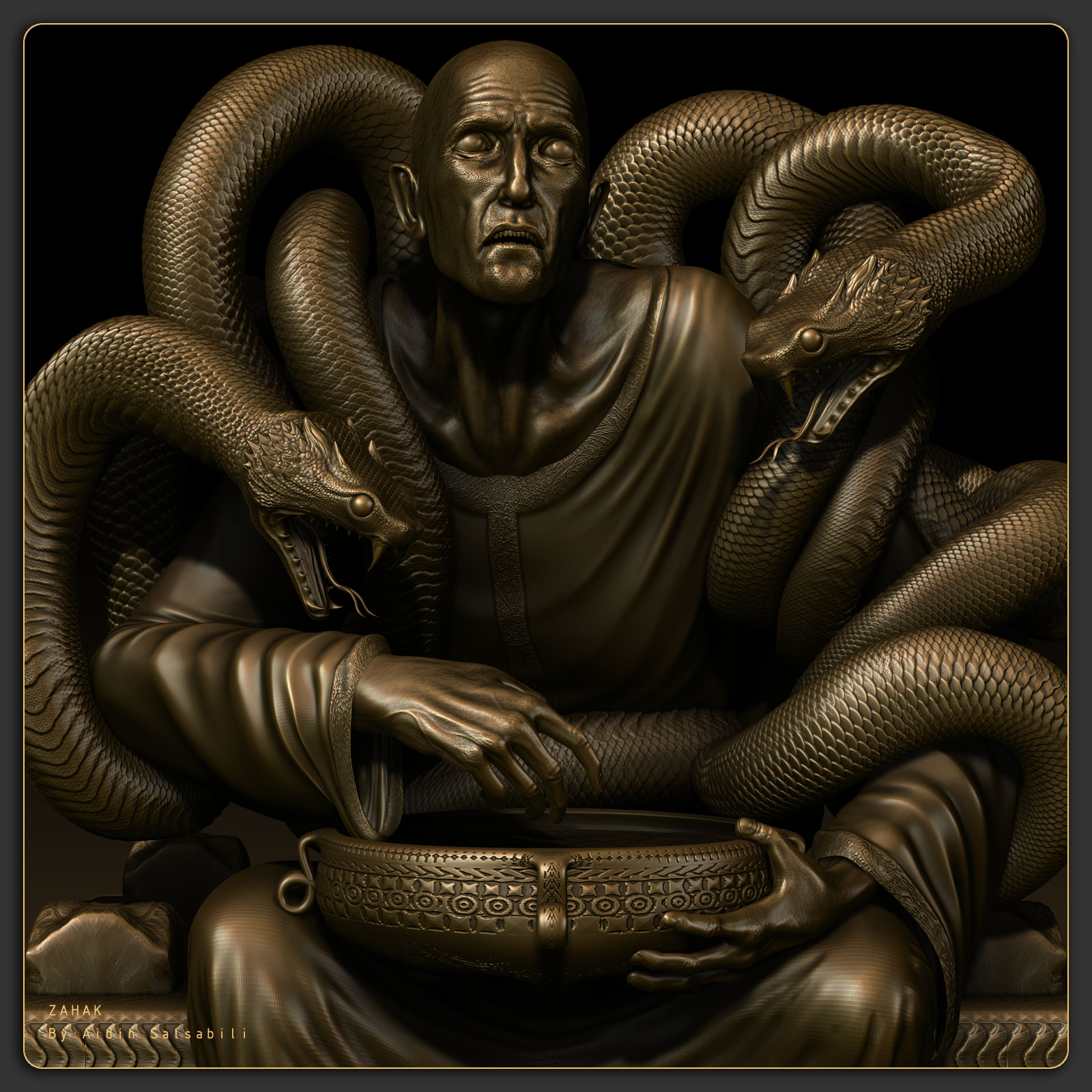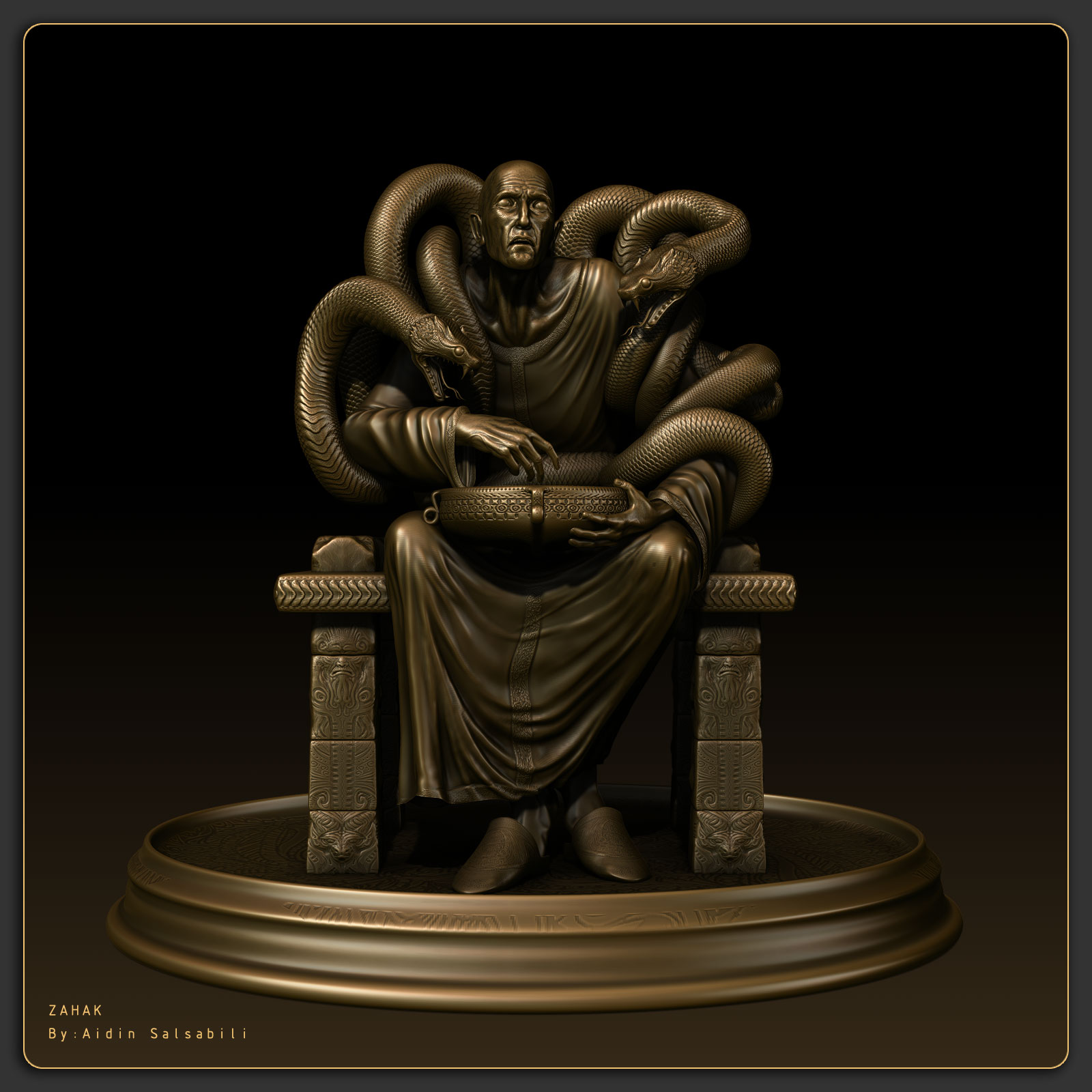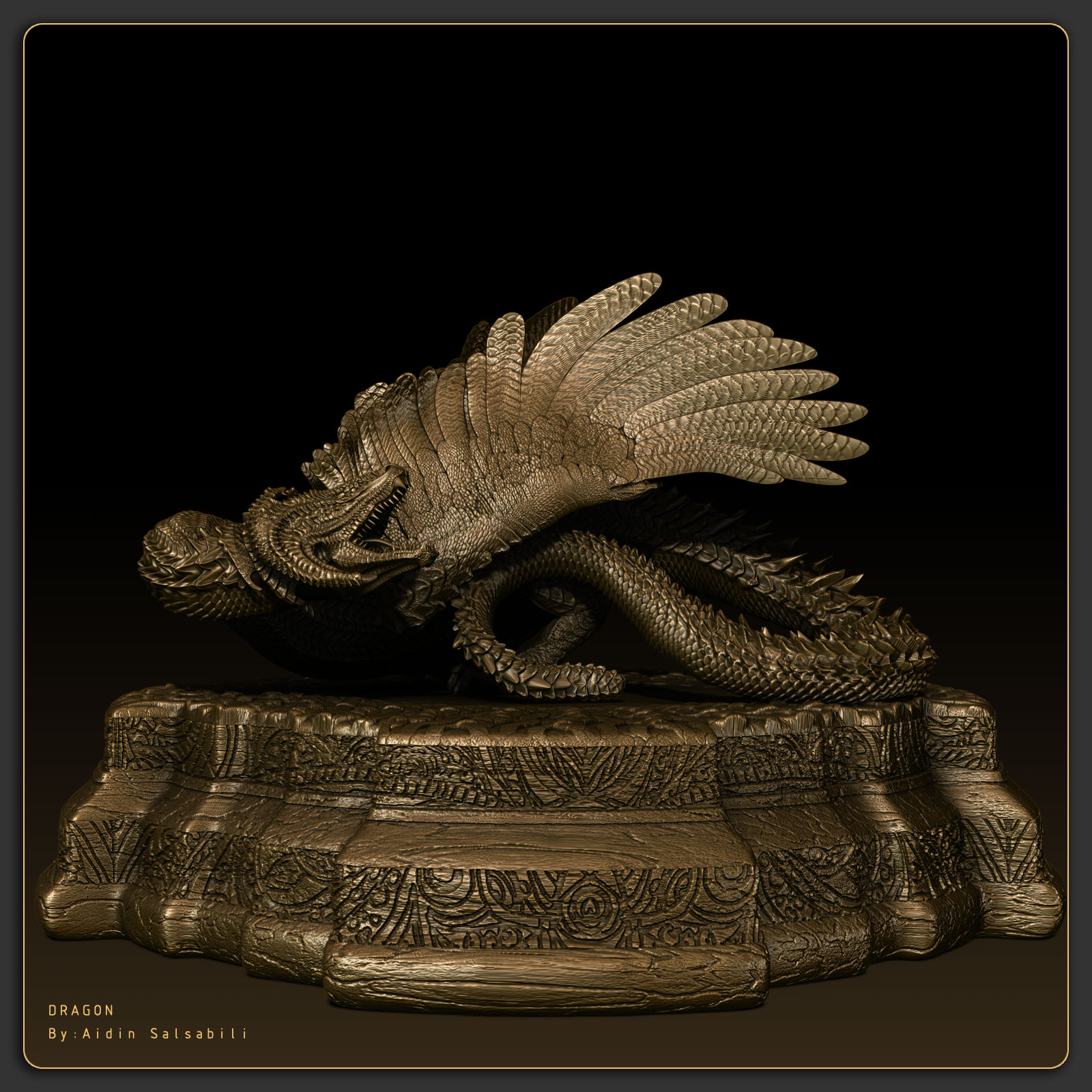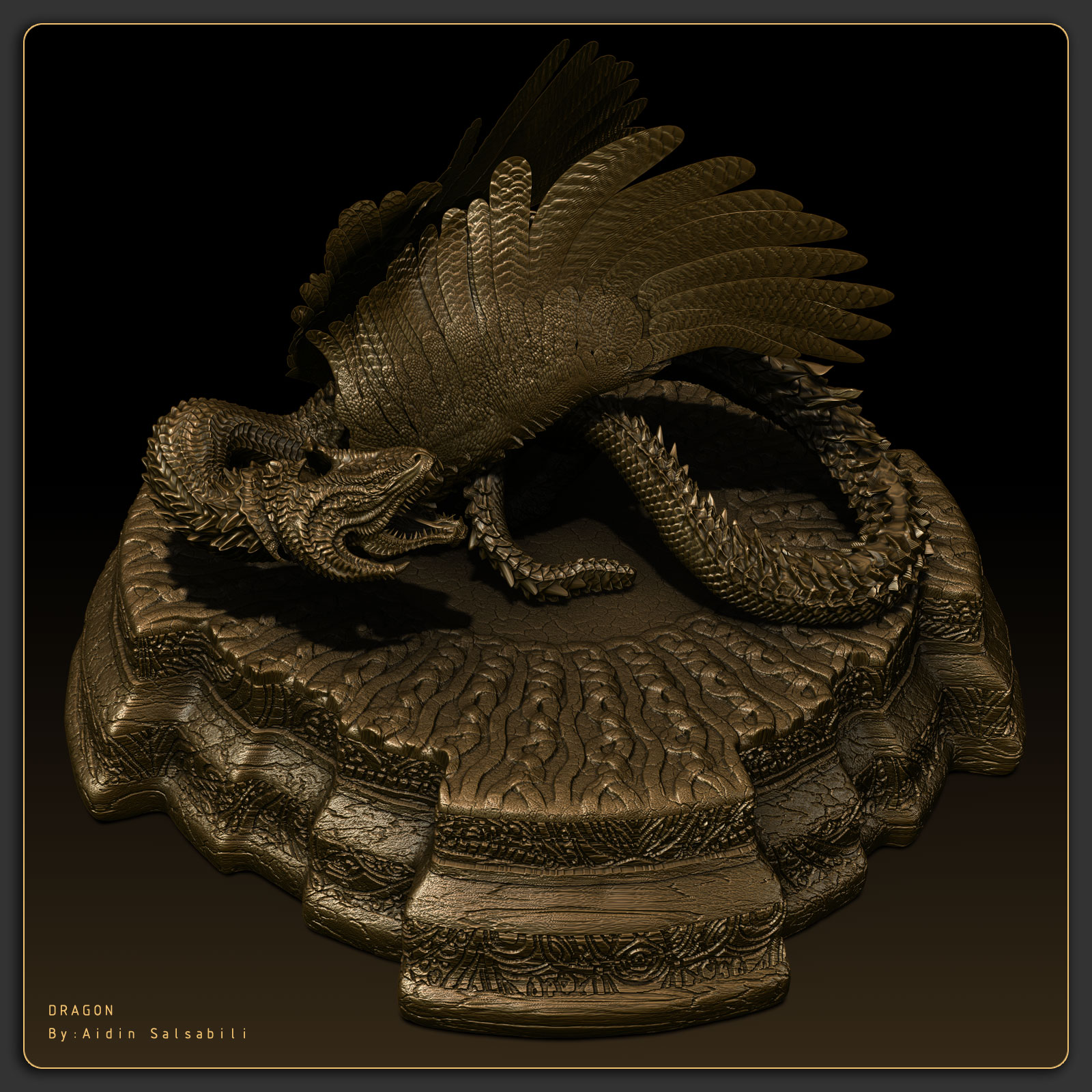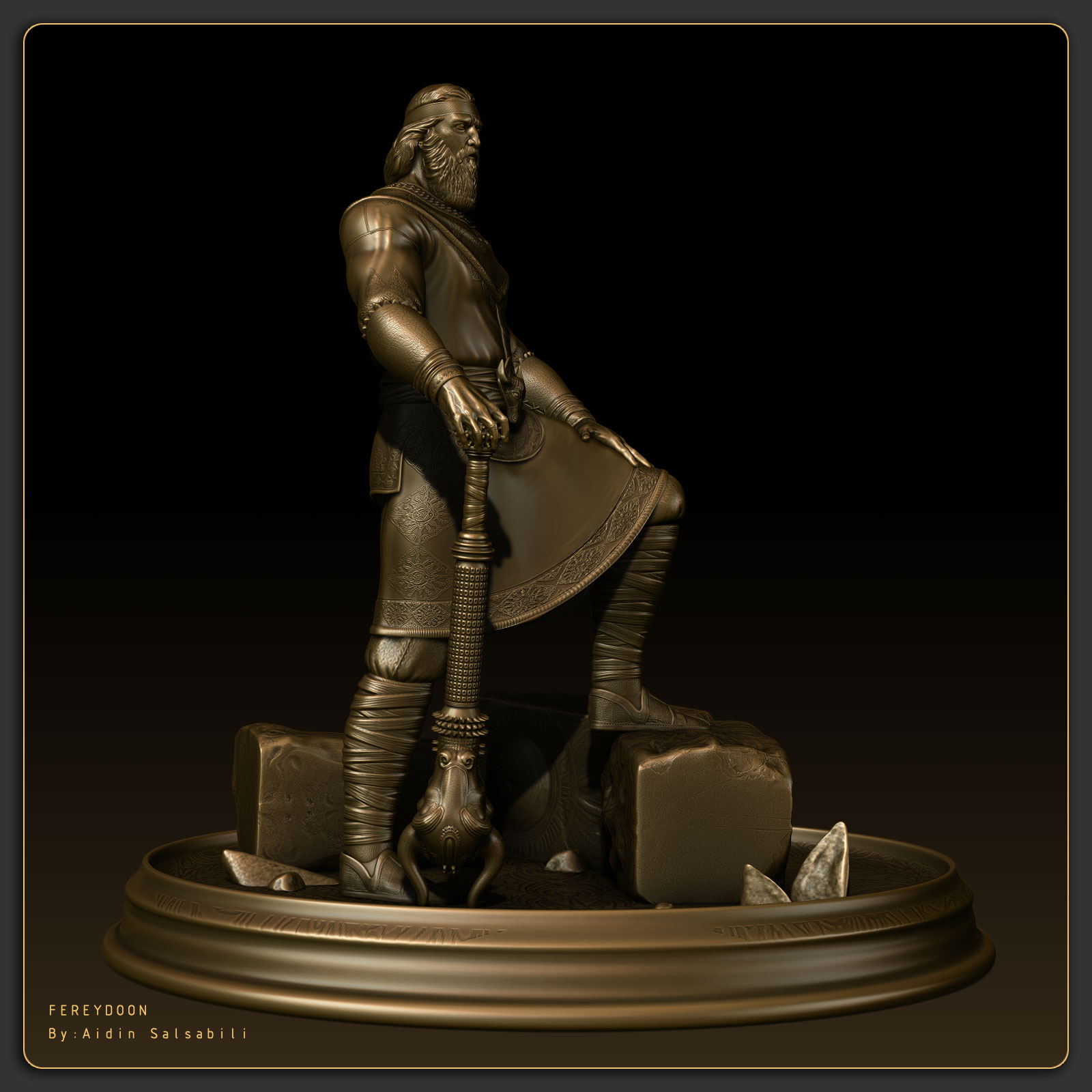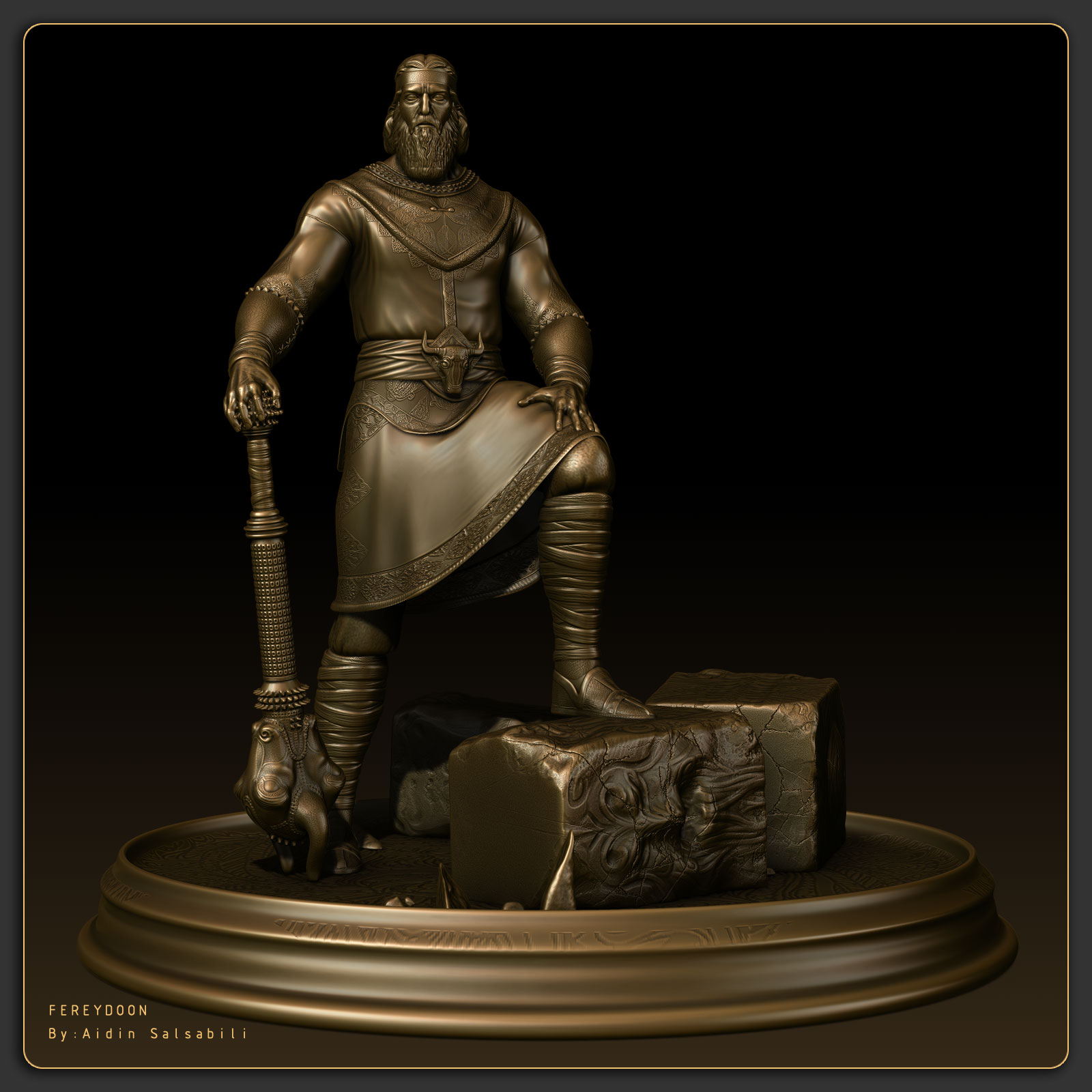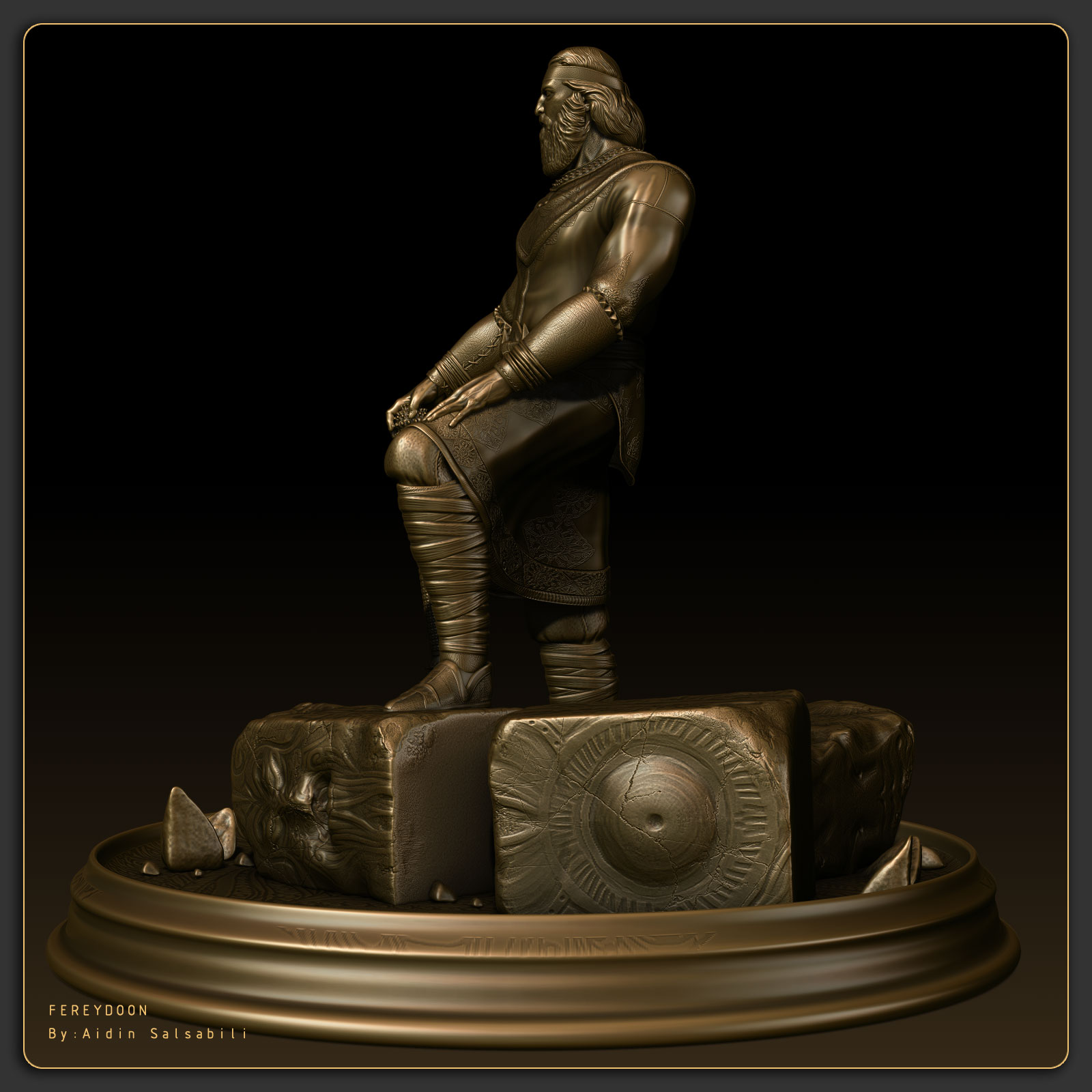All created by Zbrush
Rostam is the epic hero of the Persian epic of Shahnameh in Persian mythology and son of Zal and Rudabeh.
Rostam and Sohrab
Rostam is a Persian hero and one of the favorites of King Kaykavous. Once, following the traces of his lost horse, he enters the kingdom of Samangan where he becomes the guest of the king during the search for his horse. There Rostam meets princess Tahmina and marries her. The king becomes furious and exiles Rostam. Rostam leaves after he gives Tahmina a necklace to remind her of him, not knowing of their unborn child whom she later names Sohrab. Rostam, angered by the king’s actions leaves to become a great warrior. Rostam and Sohrab never meet until a new war between Iran and Turan started many years later. By then Sohrab has become known as the best fighter of Turan army.
As no one else dares to fight Rostam, Sohrab is sent to wrestle with the legendary Persian hero. However, the name of the hero is kept hidden from him, as Sohrab knows that Rostam was his father. On the battlefield, Rostam and Sohrab fight for an unknown amount of time, neither knowing the true name of the other.
After a very long and heavy bout of wrestling, Rostam feels weak and, fearing for his reputation, he stabs his son in the heart. It is then that he notices the necklace that he once gave Tahmina who gave it to her son to keep her safe during the war. Tahmina, who comes to the field to save them from bloodshed, arrives too late and finds Sohrab lying dead in his mourning father’s arms.
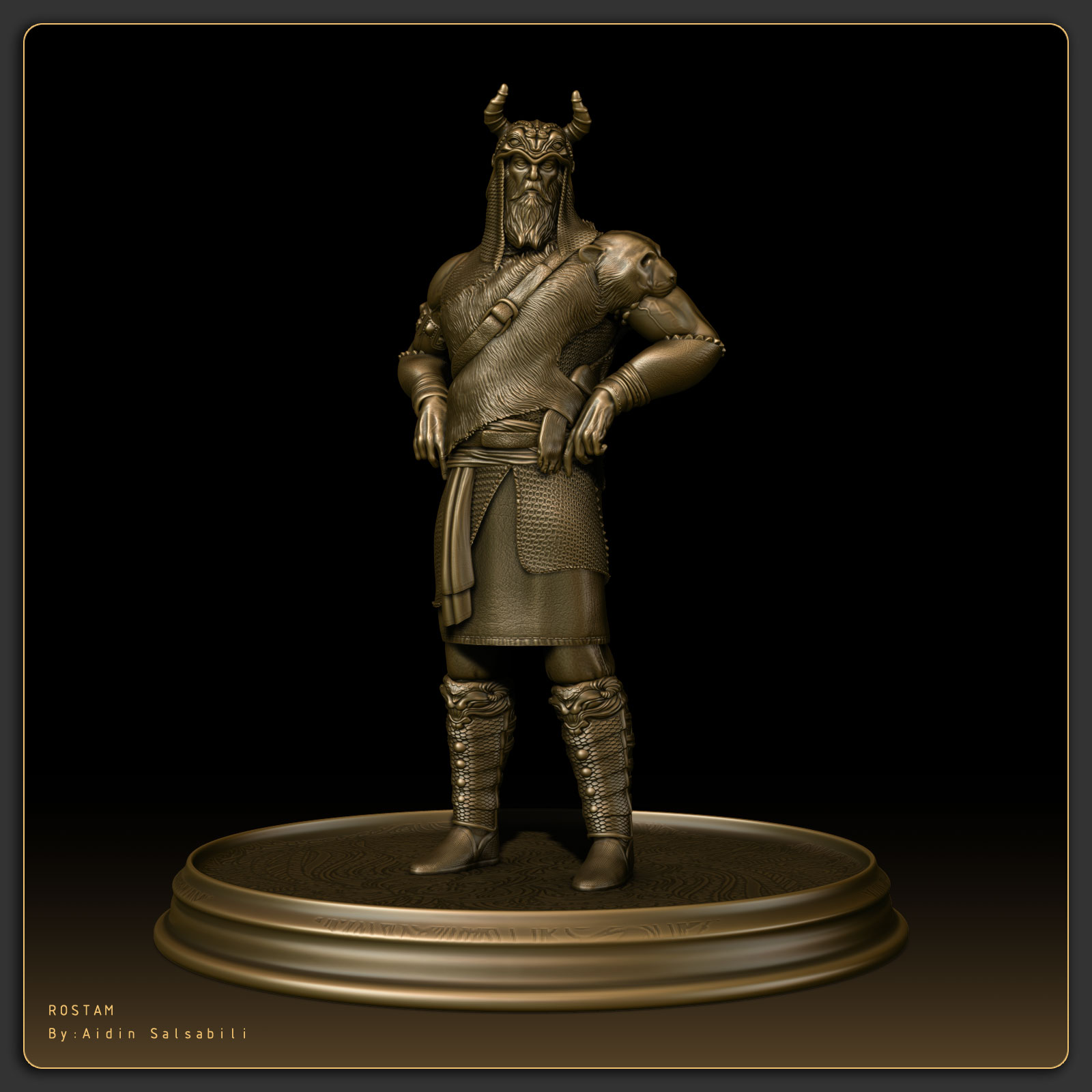
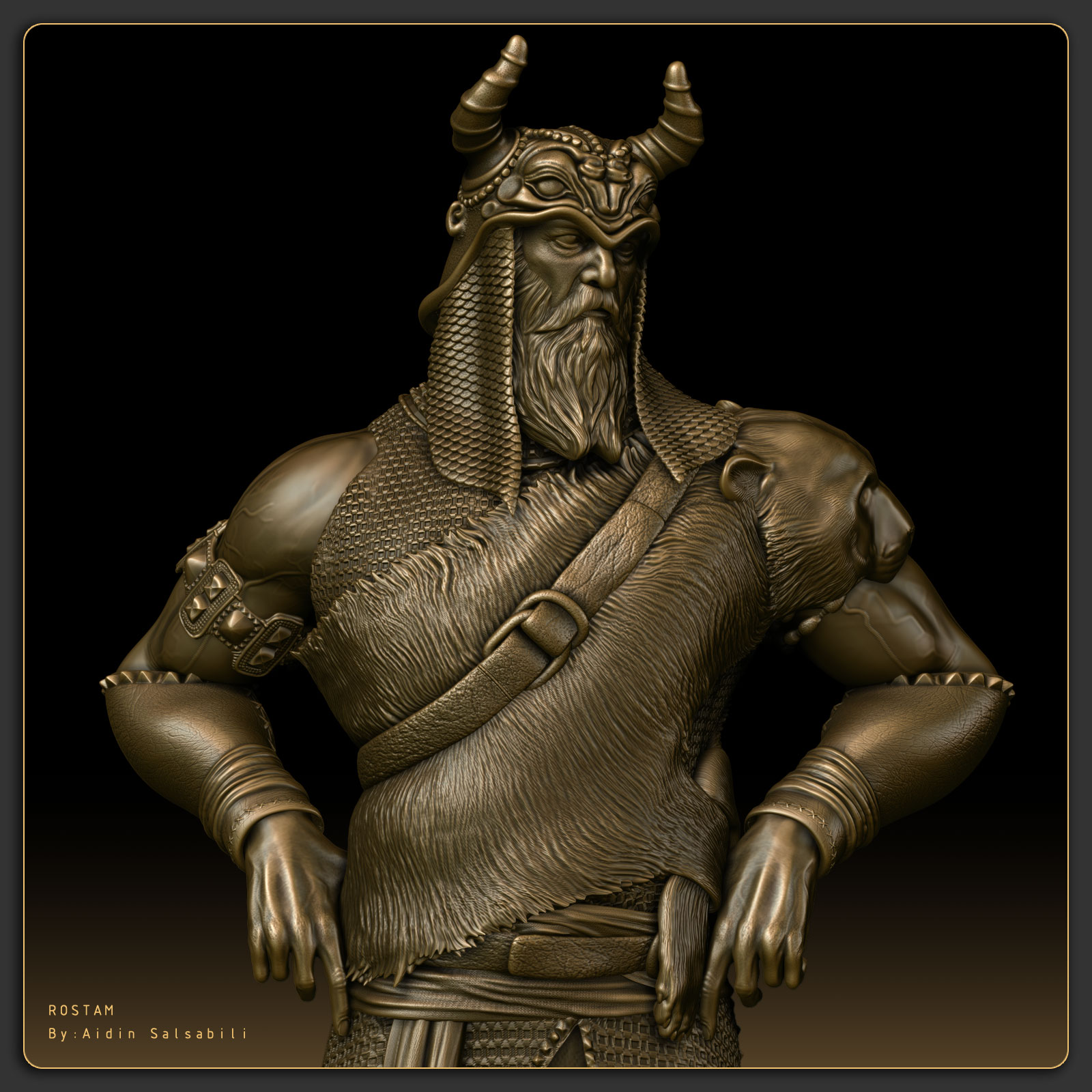




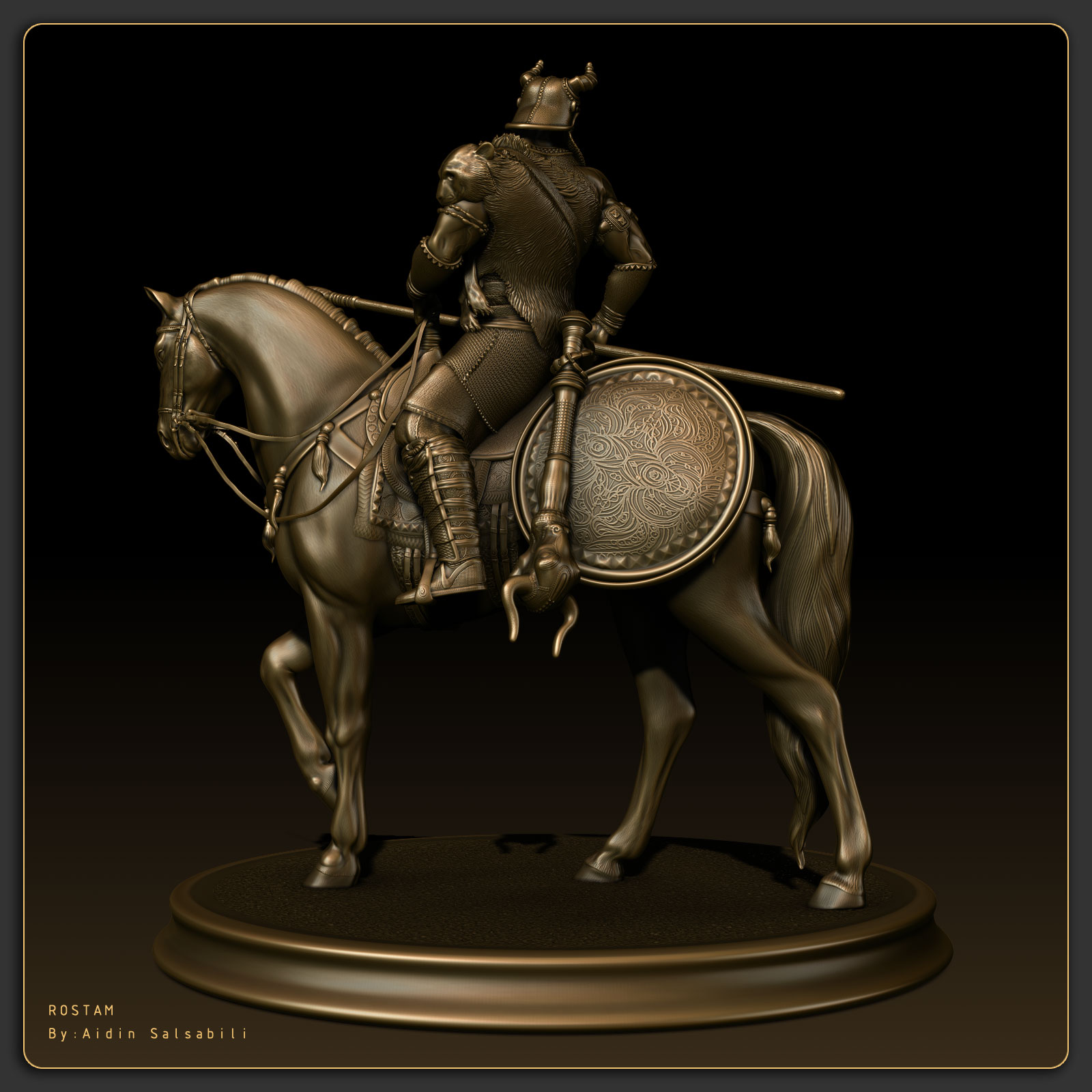
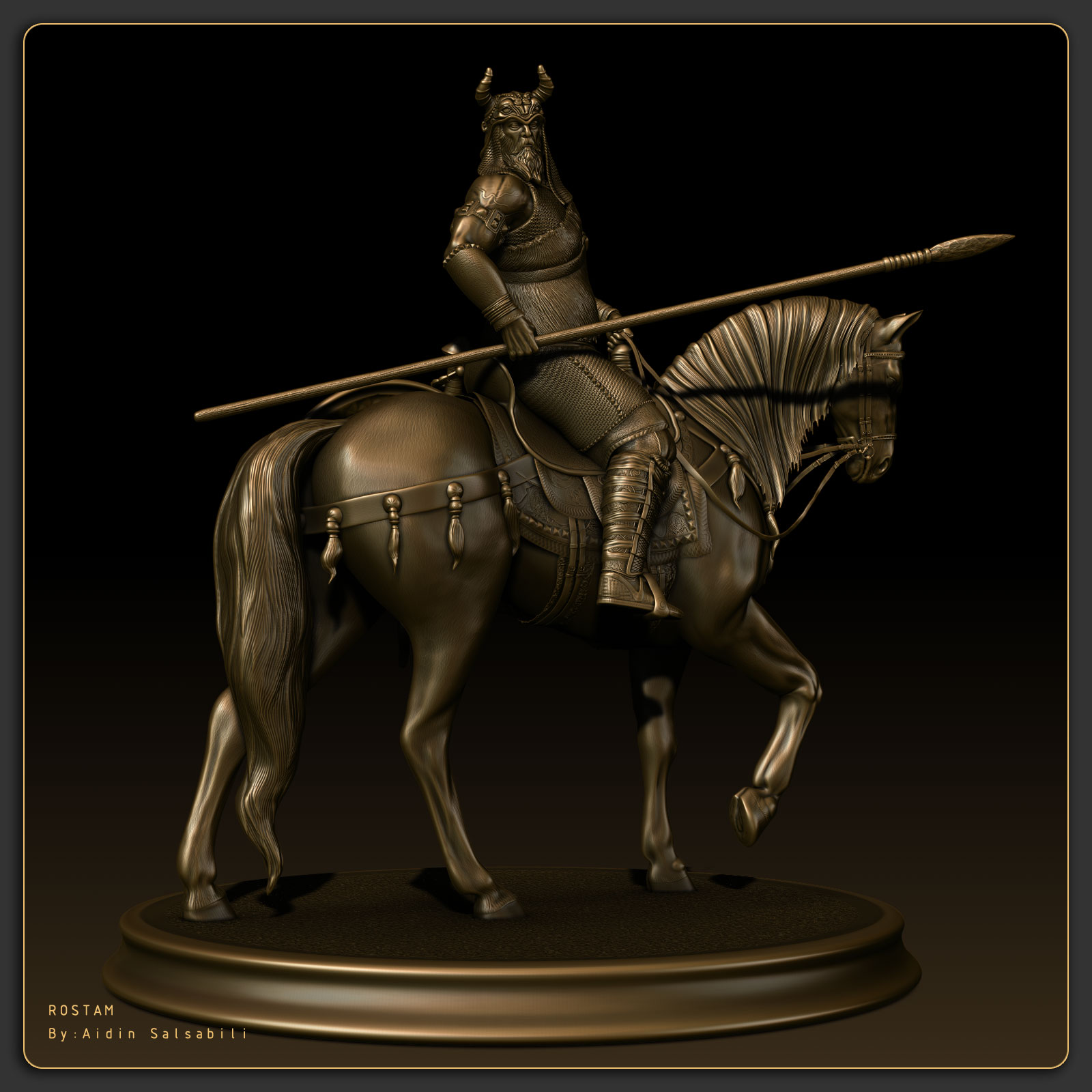

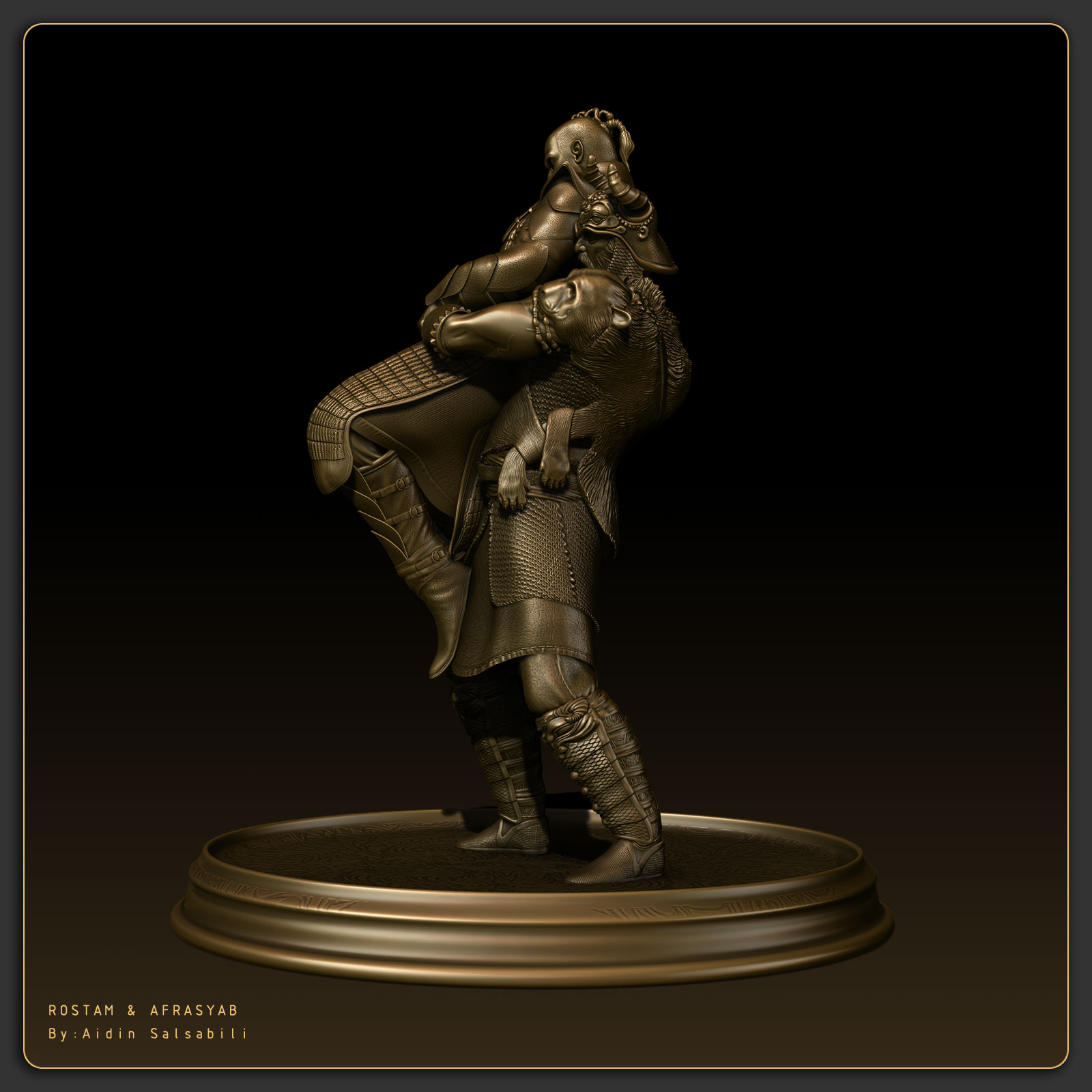


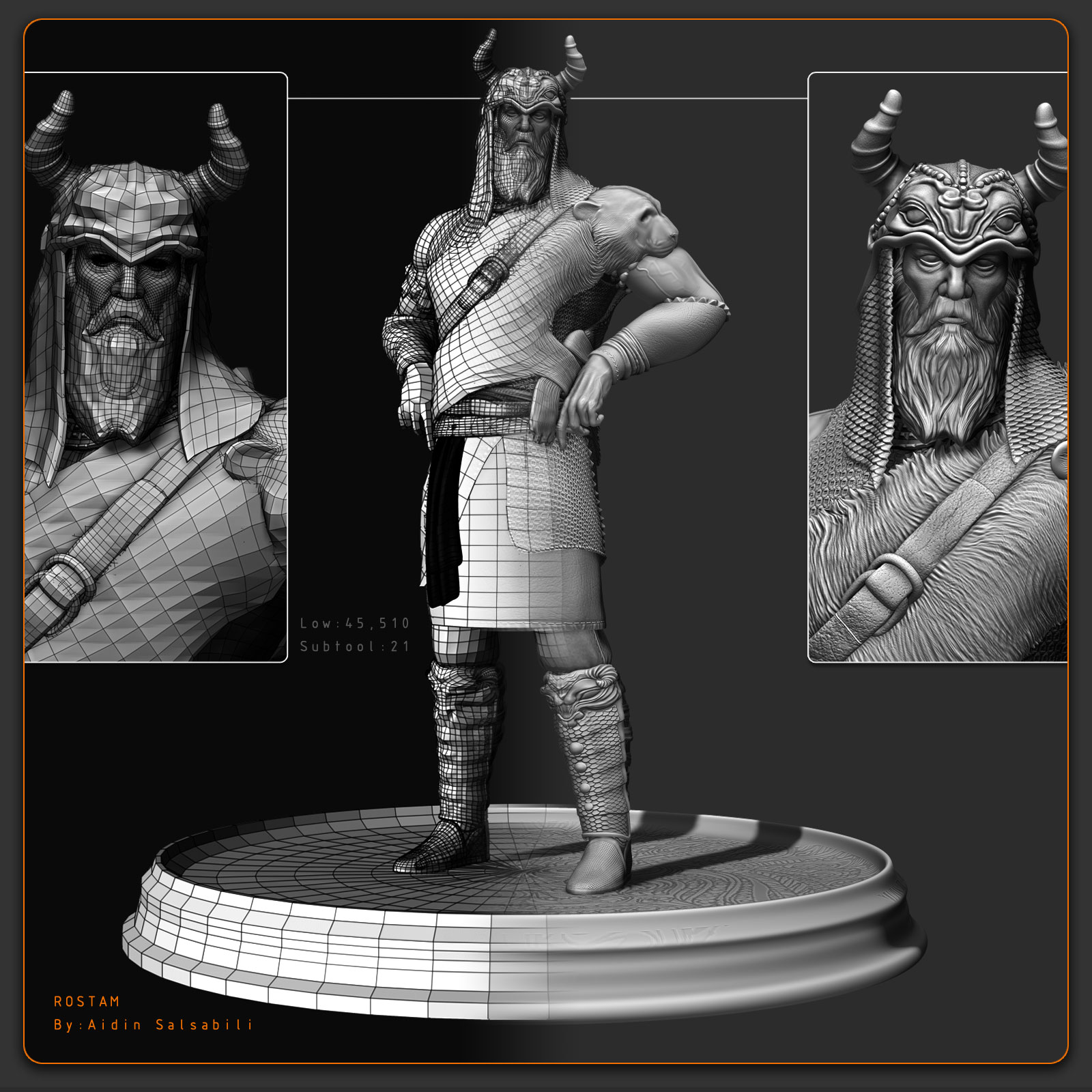

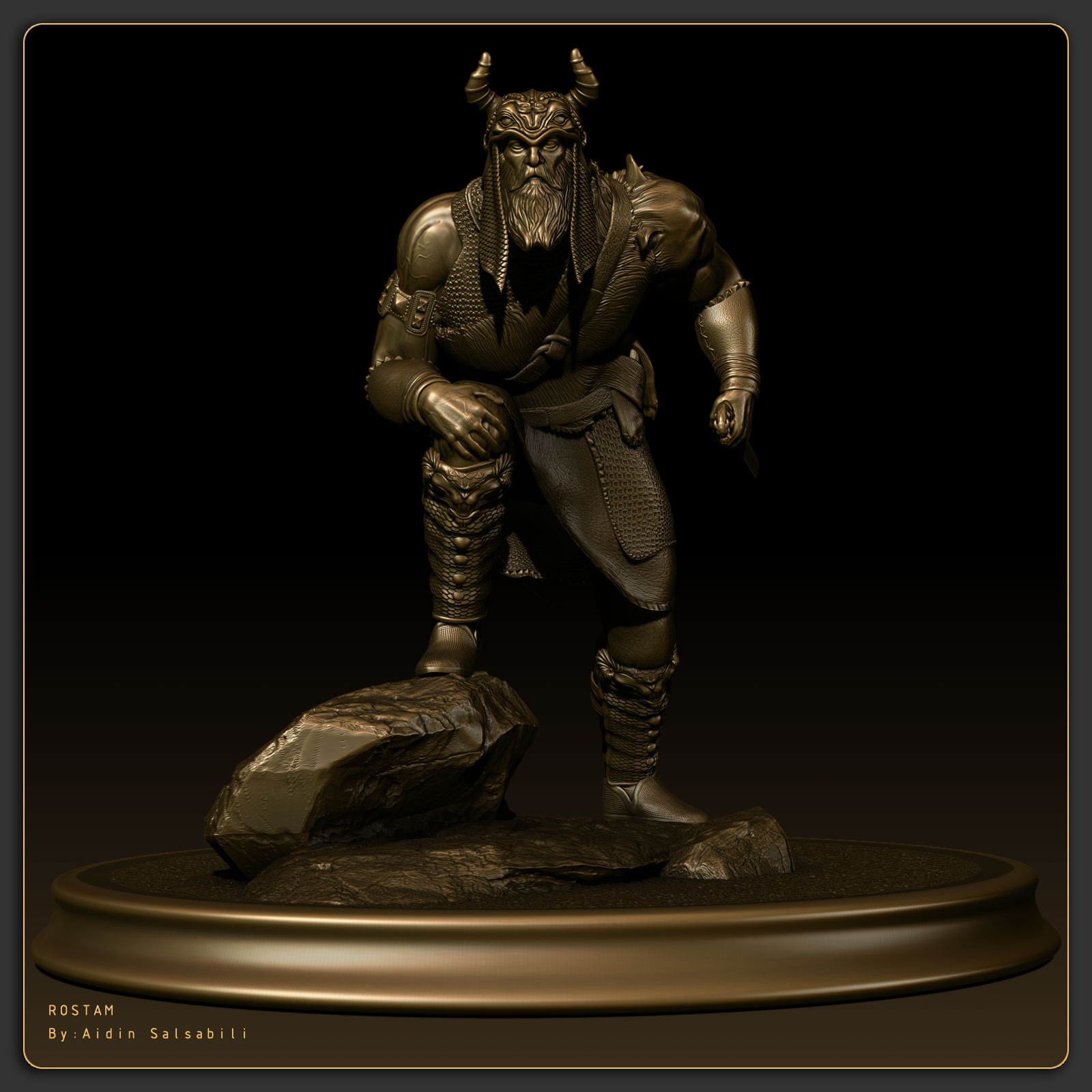
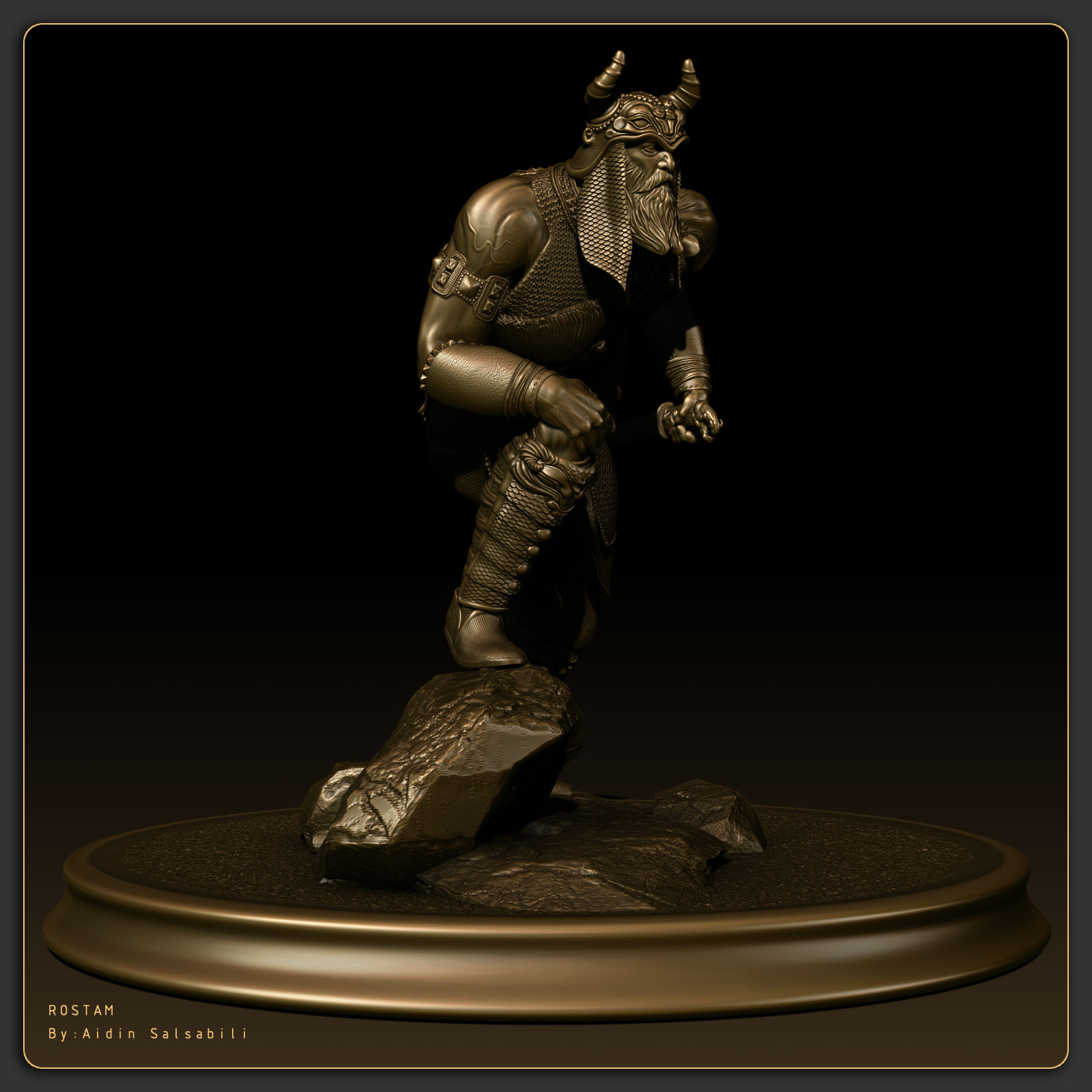
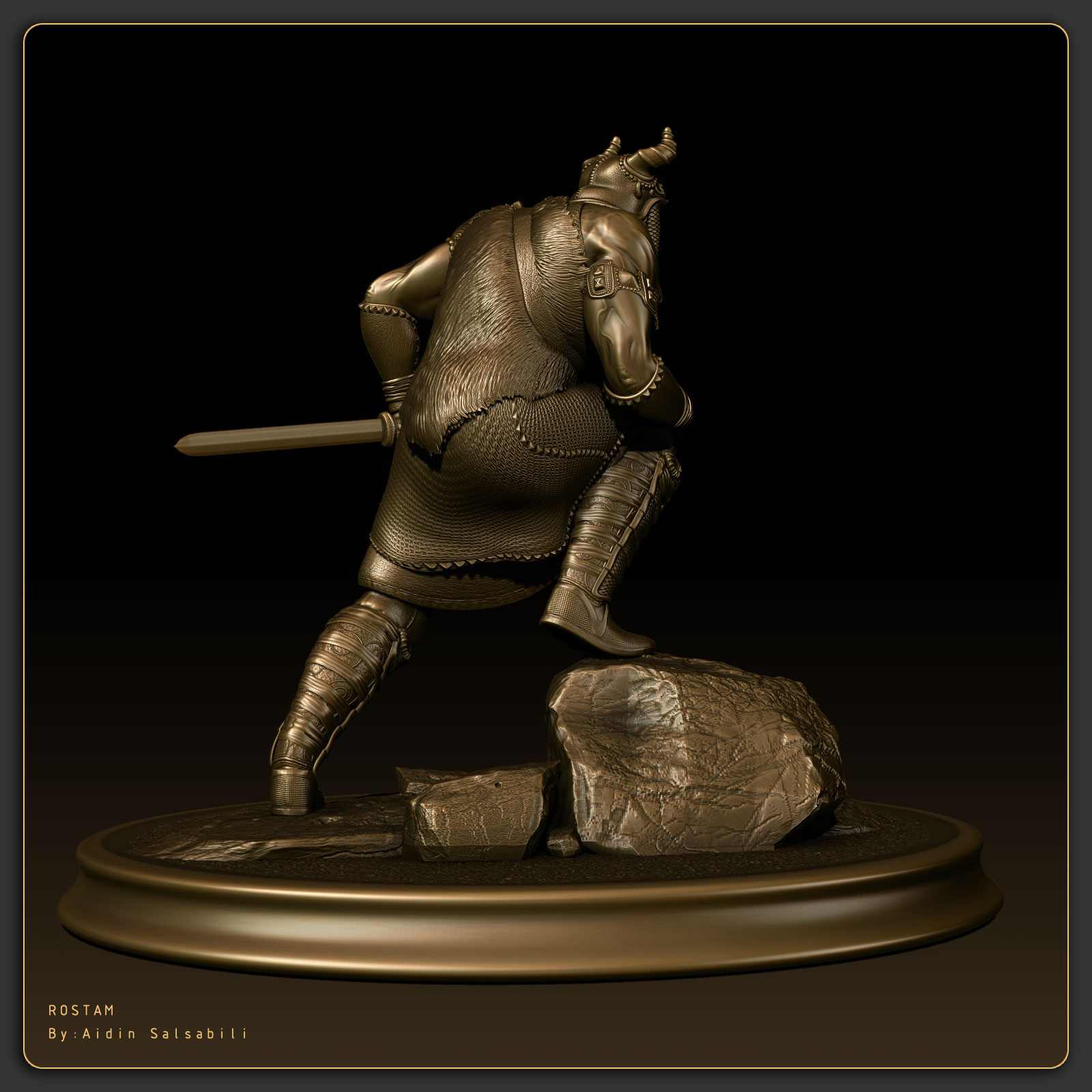
 small_orange_diamond:)
small_orange_diamond:) Thanks and looking foreword to your next sculpt
Thanks and looking foreword to your next sculpt 